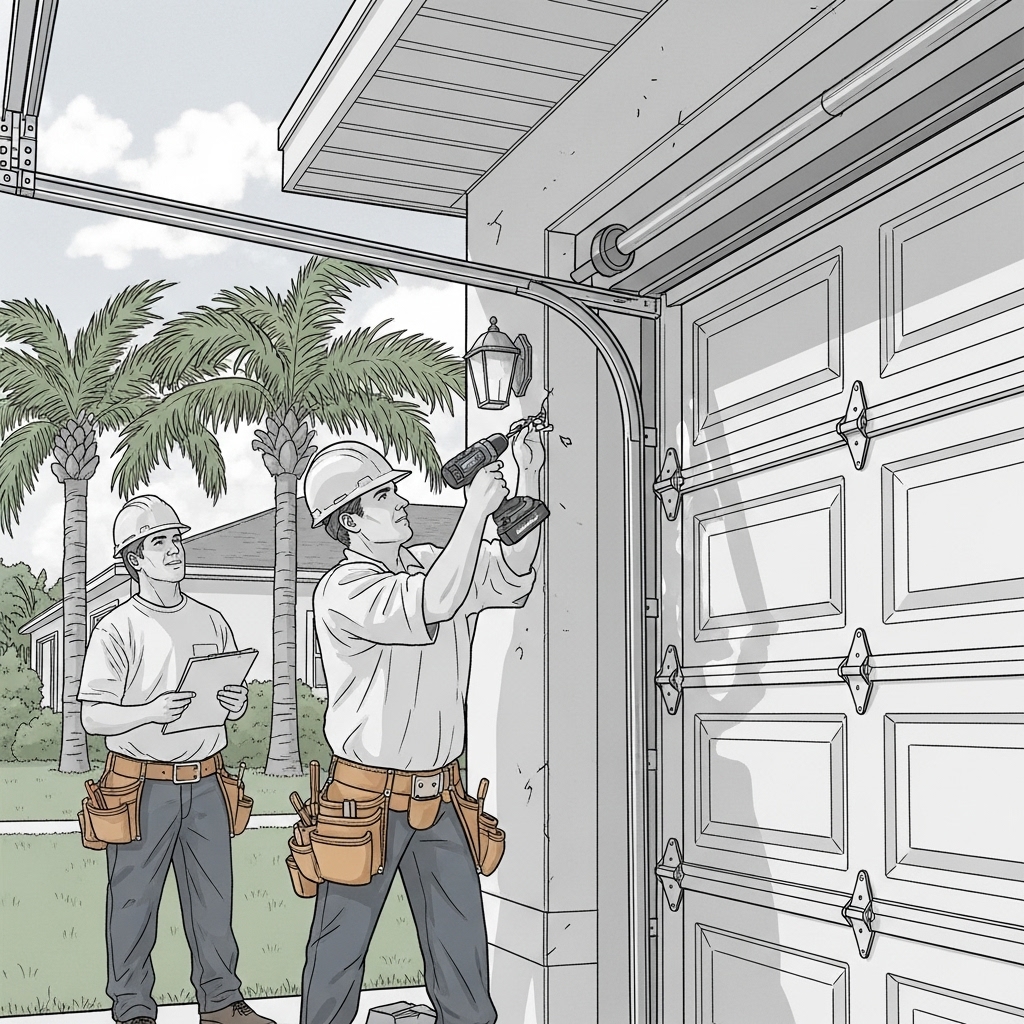Installing a new garage door in Florida involves more than choosing a style and pushing a button on an opener. Wind-load requirements, structural attachment, and local inspections all influence the project. While homeowners often focus on the look of a door, the safest and most durable installations result from careful planning, understanding permitting, and selecting components engineered for Florida’s climate. If you are evaluating your options, begin with a professional assessment and trusted garage door service to align your door, track, spring system, and opener with your home’s structure and local requirements.
This guide explains what shapes the overall investment, how permitting typically works, what to expect during the installation timeline, and how to choose a qualified provider who understands Florida’s codes and environmental demands.
What Shapes the Overall Installation Investment
Even without discussing specific numbers, it helps to understand the elements that influence the scope of a Florida garage door project.
- Door size and configuration: Single or double doors, headroom constraints, and special configurations such as low-headroom kits affect hardware and labor.
- Material and construction: Steel, aluminum, composite, and wood options vary in durability and maintenance requirements. In Florida, corrosion resistance and finish quality are important.
- Insulation and performance: Insulated panels improve comfort and sound control; heavier doors may require different springs and hardware.
- Wind rating and reinforcement: Wind-rated or impact-rated doors, heavier-gauge tracks, and structural brackets are essential in many jurisdictions.
- Hardware packages: Rollers, hinges, bearings, and spring types contribute to longevity and noise levels.
- Opener selection: Drive type, horsepower, smart features, battery backup, and surge protection influence reliability during storms.
- Site conditions: Framing condition, substrate strength, and any necessary structural repairs or anchoring improvements shape the scope.
Permits, Approvals, and Inspections in Florida
Most Florida jurisdictions require a permit for garage door replacement or installation, especially when wind-load ratings are involved. The permitting process helps ensure the door assembly, track, brackets, and fasteners meet design pressures and that the finished installation is anchored to sound structure.
- Application: A contractor typically submits product approvals and installation details. Documentation may include Florida Product Approval or other recognized approvals for your jurisdiction.
- Review: The building department reviews design pressures, wind zones, and compliance with local amendments.
- Installation: The installer follows approved details, including specified anchors, spacing, and reinforcement struts.
- Inspection: An inspector verifies that the installed system matches the permit, that hardware is correctly placed, and that the door operates safely.
In communities with homeowners’ associations, you may also need HOA approval for style, color, or window patterns. Coordinate HOA requirements with your permit timeline to avoid delays.
Preparing Your Home for a Successful Installation
Good preparation sets up a cleaner, faster installation day and a better outcome.
- Clear the work area: Move vehicles, tools, and storage items away from the door, tracks, and opener area.
- Inspect lighting and power: Ensure adequate lighting and accessible outlets for installers’ tools.
- Plan access: Provide gate or community access details and discuss pet safety during the appointment.
- Review opener compatibility: Confirm that your chosen opener pairs well with the door’s weight and spring system.
The Installation Day: What to Expect
While every project differs, installations typically follow a familiar sequence.
- Removal: The old door, tracks, springs, and opener components are safely removed and disposed of according to local rules.
- Framing evaluation: Installers examine jambs, header, and mounting surfaces for integrity and make necessary adjustments so anchors engage sound structure.
- Track and hardware layout: Tracks, brackets, and reinforcement struts are measured and aligned per approved details.
- Spring system setup: Springs are sized and wound to balance the door correctly, reducing strain on the opener and improving safety.
- Opener installation: The opener rail and head are mounted, travel limits set, and safety eyes aligned.
- System testing: Technicians test manual balance, automatic operation, safety reverse, and force limits.
- Inspection appointment: If required, a building inspector verifies compliance with the permit and approvals.
Florida-Focused Choices That Improve Longevity
The right components help a new installation last longer and run more quietly in Florida’s climate.
- Corrosion resistance: Choose galvanized or stainless fasteners, powder-coated springs, and sealed bearings to fight humidity and salt air.
- Heavy-duty tracks and brackets: Thicker-gauge hardware resists deformation under wind loads.
- Insulated panels: Improve comfort in hot garages and reduce noise transfer to living spaces.
- Battery backup and surge protection: Maintain access during outages and protect electronics from voltage spikes.
- Quiet drive systems: Belt-drive openers dampen vibration and reduce noise for attached garages.
Working With the Right Provider
Experienced Florida providers understand wind zones, product approvals, and inspection expectations. They can recommend door models and hardware packages that match your home’s needs and local requirements. Choose a company that explains how spring sizing, reinforcement, and opener selection work together as a system. Good communication and documentation help you understand what was installed and how to maintain it.
- Ask about permits and inspections: Your contractor should manage paperwork, schedule inspections, and be present when needed.
- Confirm product approvals: Ensure the selected door and hardware have the right approvals for your address.
- Verify safety testing: Technicians should demonstrate photo eye functionality, safety reverse, and balanced manual operation before leaving.
Frequently Asked Questions
Q: Do I always need a permit for a garage door in Florida?
A: Many jurisdictions require permits for replacement or new installations, especially where wind-load rules apply. Check your local building department or consult your installer.
Q: How long does installation typically take?
A: Straightforward projects often finish in a day, but timeline can vary based on framing conditions, hardware complexity, inspection scheduling, and access.
Q: What is the value of a wind-rated door?
A: Wind-rated doors are engineered to withstand specific design pressures. They include reinforcement and mounting details that help protect your home during severe weather.
Q: Should I upgrade my opener when I install a new door?
A: Many homeowners do. Matching the opener to the door’s weight and balance, adding battery backup, and improving noise control can enhance daily use and storm readiness.
Q: How do I keep the new system in good shape?
A: Schedule annual tune-ups, clean tracks, lubricate moving parts lightly, and rinse exposed hardware with fresh water in coastal areas to slow corrosion.
Confident About Your Next Step?
When you are ready to move forward, partner with a team that understands Florida’s codes, wind zones, and climate. For clear guidance, compliant installation, and dependable follow-up care, schedule professional garage door service and enjoy a safer, quieter, and more resilient garage door system.

